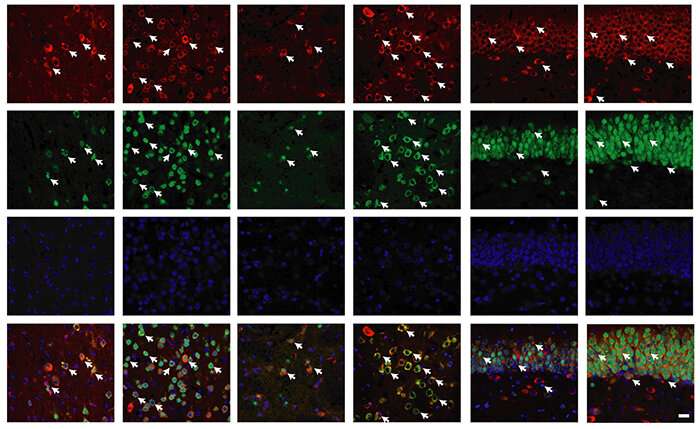Credit: Louisiana State University
Research led by Nicolas Bazan, MD, Ph.D., Boyd Professor and Director of the Neuroscience Center of Excellence at LSU Health New Orleans School of Medicine, and Ludmila Belayev, MD, LSU Health New Orleans Professor of Neuroscience, Neurology and Neurosurgery, has unlocked a key fundamental mechanism in the communication between brain cells when confronted with stroke. They report that DHA not only protected neuronal cells and promoted their survival, but also helped maintain their integrity and stability. The discovery provides potential new clinical targets and specific molecules for the treatment of ischemic stroke and other cardiovascular diseases. Their findings are published online in CNS Neuroscience & Therapeutics.
Brain cells talk to one another. This synchronized cell-to-cell crosstalk regulates neuroinflammation and the immune system, which are activated in the brain at the onset of stroke, Alzheimer's, Parkinson's, and other diseases. The researchers found that in the model of stroke, docosahexaenoic acid (DHA) affects the levels of two proteins crucial to communication between brain cells—mesencephalic astrocyte-derived neurotrophic factor (MANF) and triggering receptor expressed on myeloid cells-2 (TREM2). They discovered that treatment with DHA reduced the size of the damaged brain area, initiated repair mechanisms and greatly improved neurological and behavioral recovery. These findings provide a major conceptual advance of broad relevance for neuronal cell survival, brain function and, particularly, stroke and neurodegenerative diseases.
DHA is made from omega-3 very long chain polyunsaturated fatty acids (VLC-PUFAs,n-3). It is found in fatty, cold-water fish like salmon. Among other benefits, DHA is essential for normal brain function in adults and for the growth and development of the brain in babies.
"Our findings contribute greatly to our understanding of cellular interactions engaging neurons, astrocytes, and microglia to sustain synaptic circuitry, set neurogenesis in motion, and initiate restoration to pathological derangements," notes Dr. Bazan, who also holds the Ernest C. and Ivette C. Villere Chair at LSU Health New Orleans.
These findings advance the understanding of how the complexity and resiliency of the human brain is sustained, mainly when confronted with adversities as in stroke. A key factor is how neurons communicate among themselves. These novel molecules participate in delivering messages to the overall synaptic organization to ensure the accurate flow of information through neuronal circuits.
"We know how neurons make synaptic connections with other neurons; however, these connections have to be malleable in order to change to the appropriate strength through experience," explains Dr. Belayev.
"It's like an orchestra," says Bazan. "You need a conductor, and this is the role that DHA plays. Such a large-scale complexity first requires violinists, or in this case, synapses, which are highly sensitive sites of stroke injury that become messengers to target vulnerable cells."
More information: Ludmila Belayev et al, DHA modulates MANF and TREM2 abundance, enhances neurogenesis, reduces infarct size, and improves neurological function after experimental ischemic stroke, CNS Neuroscience & Therapeutics (2020). DOI: 10.1111/cns.13444
Provided by Louisiana State University























